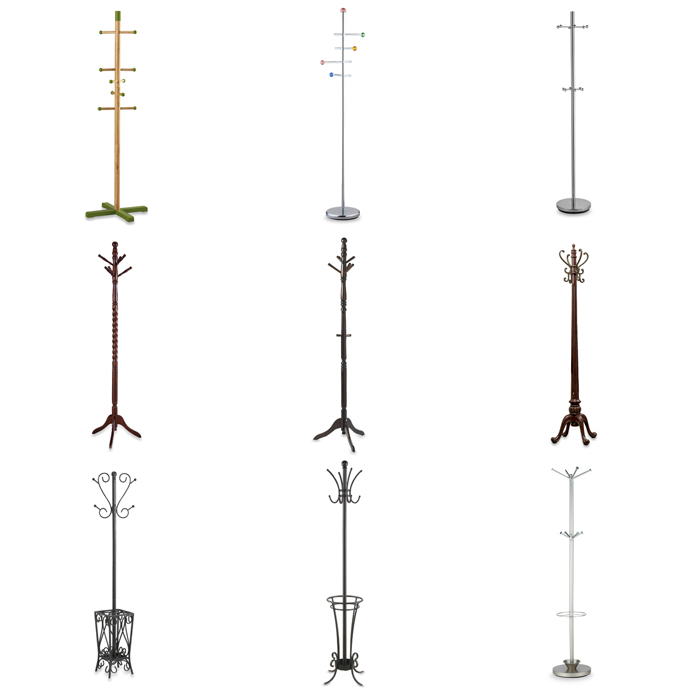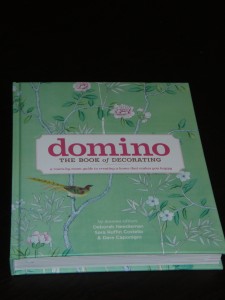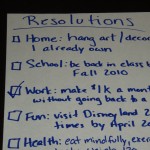This is part three to chapter one of the Domino book of decorating.
These next few steps really go hand in hand. While you research pricing and where to buy, you should save your swatches and clippings to put together a whole design scheme. This ideally would be a single sheet of paper with all of your colors, textures, theme, and major elements. Based on your scheme and budget, you can then make your decorating schedule. Remember the order things should be done in. I suggest you paint the walls first, then move in the furniture, and finish with the accents and decor. If you agree, your list should reflect that order. While your list should help keep you in check and prevent you from feeling overwhelmed, don’t think it’s set in stone. If some unexpected money comes in, get that more expensive piece of furniture you might have been saving for just don’t move it in yet.
Research
If you’ve been following along with the steps, you’ve probably done a lot of research to find inspiration and determine your style. This step is much more specific. This is where you do research on a specific room. You’ll be looking for specifics. If you’re working on an office space you’ll most likely be looking for desks, organization, and lighting as well as decor elements such as wall coverings, floor coverings, and art. This is also the step to go back to that inspiration and find where to buy and how much items will cost. To keep things organized, continue using dropbox for images and files but start bookmarking links so you know where to go when you have money in hand. Google offers bookmarking if you already use it, but if you need or want to share your finds, I suggest delicious. Not only does delicious save the link online but you can make your own title, notes, and add tags for that extra organization. I find the notes especially helpful when I’ve found an item in different online stores for different prices. I put the price in a note so I don’t even have to click the link until I’m ready to buy. You can check mine out here.
Create a design scheme
This is also known as a mood board. In doing a quick search to find an online tool, it seems there are many. I plan on checking out three or four and writing an update in the future. The purpose of this step is to narrow down your options and see how everything looks together. The example in the book is for a living room. It includes three paint colors labeled with the name of the paint and surface they’ll be covering. It also has pictures of seating and a swatch of fabric each piece will be covered in. It has a picture of a lamp as well as a rug. Your design scheme can be just as simple or include more details. I really like tangible mood boards especially since fabric and paint are probably selected in person rather than online. It would be quick work with a scanner, however, to get these items digitized. I have wonderful ideas for my client’s kitchen and am looking forward to trying out this step!
Make a decorating schedule
This is basically a to do list of next steps. It’s good to have an overall plan, but I’ve found that smaller steps after something is completed or worked on is easier to follow. This is something that’s very fluid and easily changed. Again, I suggest a basic schedule of walls, furniture, details. The example in the chapter goes along with the design scheme: order paint, order sofa in correct fabric, order chairs, and so on. Your list can be as general or detailed as possible but should be updated often. For an online checklist, I use tadalist. You can have many lists (say one for each room) and even share checklists with other users. They even have a clever way of quickly showing how close you are to finishing a list.
Here’s the checklist again:
- Find inspiration
- Determine your style
- Consider how you’ll use a room
- Assess your stuff
- Draw up a floor plan
- Set a budget
- Research
- Create a design scheme
- Make a decorating schedule
I think you’ll repeat each of these steps but cater to whatever space you’re working on. For instance, when looking for inspiration while planning an office space, you should search for images of offices. Furthermore, your design style can change a bit based on the space especially if it’s closed off. Each step will be similar but different based on where you’re working.
I’m currently working on finishing up an office space for a client and hope to take what we’ve done through these steps and try out some of the suggested tools.
Thanks for reading. If you’d like to connect, follow me on twitter here or leave a comment below.

 In my hope to accomplish these goals, I bought the
In my hope to accomplish these goals, I bought the  I just wanted to share a quick update on my goals for 2010. One of them was to bring in about $1,000 a month without going back to traditional employment.
I just wanted to share a quick update on my goals for 2010. One of them was to bring in about $1,000 a month without going back to traditional employment.